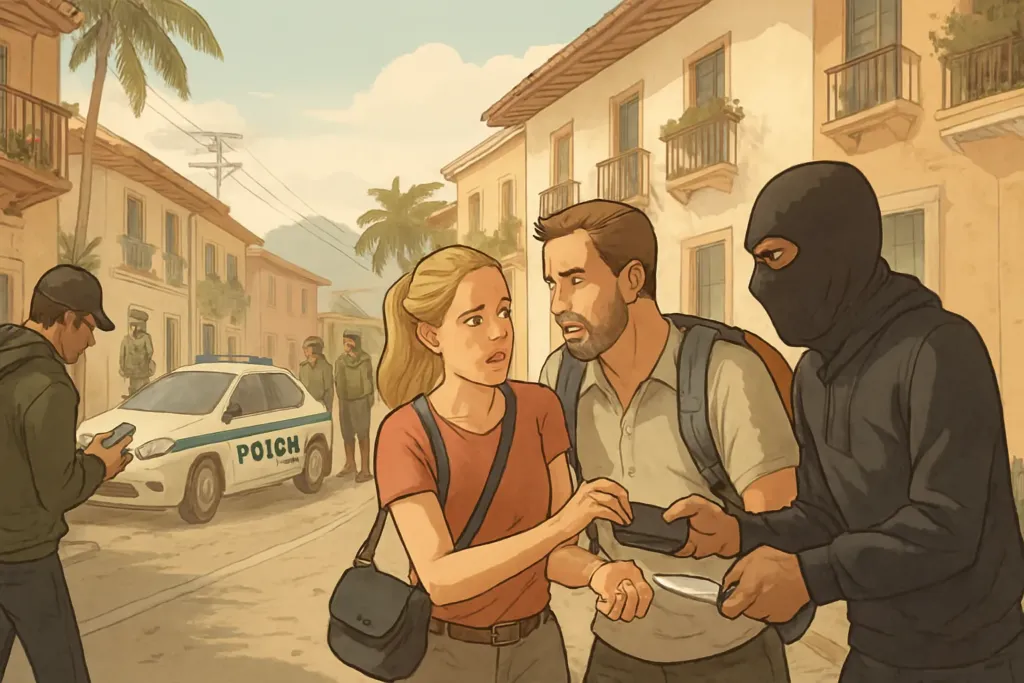Context and statistics
Safety in Colombia is uneven: tourist cores are far safer than remote borderlands. Many travel advisories flag the country for crime, civil unrest, terrorism threats, and kidnapping risk. The national homicide rate remains above 20 per 100,000, though big cities often sit below the national average while certain departments are higher. Tourist arrivals number in the millions annually, underscoring that most trips end well when travelers prepare and use common‑sense precautions.
Where risk is highest
Risk spikes in border departments with Venezuela and in some rural areas (including parts of Arauca, Norte de Santander, sections of Cauca and Putumayo) where illegal armed groups operate and kidnapping and extortion risks persist. Within cities, danger concentrates on outlying districts away from tourist infrastructure. Caribbean beach hubs and popular neighborhoods in Bogotá and Medellín are safer if you choose vetted transport and lodging and keep a low profile.
Urban crime and common threats
The most common issues for tourists are theft and robberies, sometimes with knives and usually at night. The “paseo millonario” scam involves express kidnappings after hailing an unofficial taxi, forcing cash withdrawals. Nightlife brings another danger: drinks spiked with scopolamine (burundanga), leading to loss of control and subsequent robbery. ATM distraction and skimming are common, and phones and cameras are frequent targets on beaches and viewpoints. Wearing expensive watches and jewelry and flaunting devices increases your risk.
Transport and logistics
Transport choices are a key vulnerability. Avoid street‑hailed taxis; use app‑based rides or hotel‑booked cars. Night intercity travel in the Andes is riskier due to poor visibility, landslides, and occasional criminal roadblocks. Crowded public transit is prime territory for pickpockets. Road fatality rates are markedly higher than in Western Europe; speeding, risky overtakes, and inconsistent seatbelt use are common. Motorbikes weave aggressively, and scooter crashes are frequent.
Civil unrest and road blockades
Protests and strikes (paros) can abruptly shut down traffic in cities and along trunk highways, sometimes for hours or days. Some demonstrations turn confrontational with tear gas and rubber rounds. Travelers can miss flights or get stuck at passes; build time buffers into plans, especially when connecting to international departures.
Natural hazards and climate
Colombia faces earthquakes and seasonal flooding and landslides, especially in the Andes during the wetter months (typically April–June and September–November). Mountain roads are periodically cut, forcing long detours. Coastal rip currents and heavy surf can be dangerous outside signed swim zones. In the Amazon, tropical diseases are a consideration; consult a clinician for vaccines and bring repellents.
Law, police, corruption
Tourist police patrol popular areas and generally respond quickly. Offering or requesting bribes is illegal and can worsen your situation. Legitimate officers may perform document checks—carry your passport or a copy with visa/entry stamp. Drug laws are strict; street “guides” and dealers often lure victims into robberies or arrests.
Numbers and trends
International arrivals have climbed to several million annually, alongside improved security in central urban districts and persistent high risk in rural and border zones. Robberies and thefts in tourist areas remain a concern: major cities log dozens to hundreds of theft reports daily, and scopolamine‑related robberies appear regularly in police blotters. The bottom line is a dual reality: a country actively welcoming visitors, with risks that are uneven and manageable through discipline.
How to reduce risk: practical steps
Choose reputable neighborhoods and 24/7 staffed hotels or guesthouses. Use ride apps, walk only on busy, well‑lit streets at night, and avoid dark alleys. Leave passports and most cash in a safe; carry copies. Don’t wear flashy accessories; stop to take photos with your back to a wall. Guard your drink; decline spontaneous invitations to “quick rides.” Travel between cities by day; monitor news for strikes and road conditions and keep a backup route. In emergencies, dial 123. Buy insurance with robbery and medical evacuation coverage.
Conclusion
Colombia isn’t off‑limits—millions safely enjoy its culture, landscapes, and food. But it is a high‑attention destination: tight logistics, strict personal‑safety habits, and respect for local realities turn potential threats into manageable risks. If you value spontaneous late‑night wandering, cheap street‑hailed taxis, and aimless rural detours, pick another country; if you’re ready for discipline and planning, Colombia can be vivid and safe.
- Finland
- Tsunami in Sri Lanka: the tragedy that changed tourism
- Sumatra
- Tourism in Nigeria: Challenges, Growth, and the Path to Regional Leadership
- Bolivia
- Grand Canyon
- Moab
- Abkhazia
- Barbados
- Entrance tickets with an open date appeared in the General Staff Building
- Pirate treasure hunting around the world: where to look without breaking the law
- Finland
- Deadly Slopes: Ski Resorts with the Highest Fatality Rates
- How to Get Around Australia
- History, discovery and scientific significance of the McMurdo Dry Valleys
- Tragic Geography: Tourist Sites with the Highest Death Toll
- Ecuador
- Greenland
- Visible from the Moon: Earth’s Most Monumental Wonders
- Mtsyri: tracing Lermontov in Mtskheta











